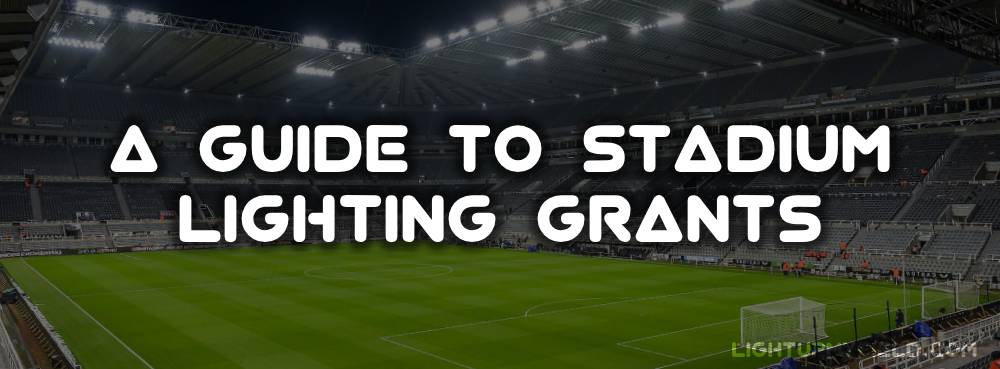Upgrading stadium lighting for a school or youth sports field can be a game changer. Better lights mean evening games, safer training sessions, and even the possibility of hosting regional tournaments. But the cost can be staggering—a standard LED sports lighting setup for a small stadium can easily run between $150,000 and $400,000.
The good news? There are grants out there that can help schools, youth leagues, and community sports facilities make the leap. Some cover a chunk of the costs, and a few even offer full funding. With the 2025–2026 funding cycle, more organizations are focusing on sustainable, energy-efficient projects, which could be the perfect time to apply.
Let’s go through the main questions people ask when looking into stadium lighting grants.
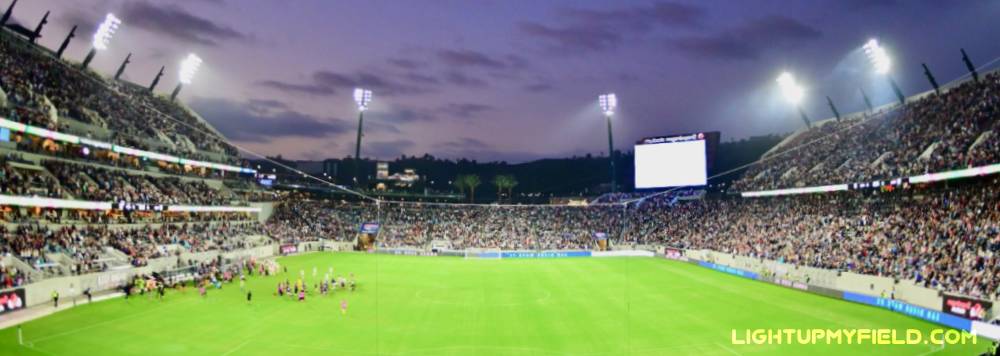
Table of Contents
ToggleCan You Really Get Stadium Lighting Fully Funded Through Grants?
It Can Happen, But Don’t Count on It
If we’re talking honestly, yes—it can happen. There are cases where schools or youth sports facilities got their entire lighting project covered by grants. But in reality, most stadium lighting funding only covers part of the bill, often somewhere between 30% and 80%. So, for a $250,000 LED lighting project, you might get $75,000 to $200,000 from a grant, and then you’ll need to figure out where the rest comes from.
Fully-funded stories are usually the result of a perfect storm: the project checks multiple boxes for the grant provider, like improving youth sports opportunities, expanding community use of facilities, and supporting sustainable technology all at the same time.
When 100% Funding is More Likely
The few times you see full coverage, it’s often because the money is coming from more than one place. Picture this: a state grant covers 60%, a federal energy-efficiency program kicks in 25%, and a local business sponsor chips in the rest. By stacking different funding sources, you can actually reach that magical “no-out-of-pocket” situation.
It also helps if your location fits a grantmaker’s priority zone. For example, many programs in 2025 and 2026 specifically target rural schools, tribal communities, or underserved urban neighborhoods. If your facility happens to be in one of these areas, your odds of getting top-tier funding go way up.
2025–2026 is a Unique Window
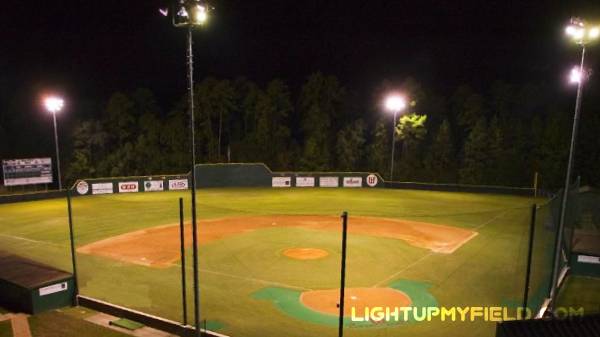 One reason now might be your best shot in years is that both state and federal budgets are still pumping big money into post-pandemic infrastructure upgrades. A few Midwest states, for example, have set aside $15–20 million over the next two years for renewable-energy sports projects, which includes LED or solar-powered stadium lights for public schools. On the West Coast, California has earmarked a portion of its Clean Energy in Schools initiative for athletic facility lighting retrofits, especially when solar panels are part of the package.
One reason now might be your best shot in years is that both state and federal budgets are still pumping big money into post-pandemic infrastructure upgrades. A few Midwest states, for example, have set aside $15–20 million over the next two years for renewable-energy sports projects, which includes LED or solar-powered stadium lights for public schools. On the West Coast, California has earmarked a portion of its Clean Energy in Schools initiative for athletic facility lighting retrofits, especially when solar panels are part of the package.
Utility companies are also sweetening the pot right now. In 2025, some are offering rebates of $200 to $500 per LED fixture replaced, which can shave thousands off your costs and be combined with grant money.
A More Realistic Approach
If you go into the process expecting a 100% free upgrade, you could be setting yourself up for disappointment. A smarter strategy is to aim for a grant that covers most of the cost, then fill the rest with fundraising, sponsorships, or municipal support. For example, a high school in Oregon in 2024 managed to fund 85% of its $320,000 lighting upgrade through a mix of a state clean-energy grant and local business donations—leaving just $48,000 for the school district to cover.
The bottom line? Dream big, but plan realistically. If a fully funded project happens, it’s a bonus. But even partial funding—especially in the 2025–2026 cycle—can make a huge difference in getting those lights turned on.
Where Can You Apply for Stadium Lighting Grants for Youth and Schools?
It’s All About Knowing Where to Look
Tracking down the right funding for stadium lighting can feel a bit like a treasure hunt—there’s no single “apply here” button. But in 2025 and 2026, there are a few major sources you should have on your radar. Each has its own style, requirements, and quirks, so the trick is matching your project to what they want to fund.
Government Programs with Lighting Potential
At the top of the list are federal, state, and local government grants. The U.S. Department of Energy isn’t just about power plants—they’ve been funding community energy projects for years, and that sometimes includes sports lighting upgrades. If your project involves LED or solar systems, you’re in a much stronger position because energy-efficiency projects are exactly what these programs are trying to push.
On the state side, education departments often have annual school improvement grants that can be used for athletic facility upgrades. For example, in 2025, several states have earmarked between $2–5 million specifically for energy-saving school renovations, and lighting is often listed as an eligible category.
Local governments also occasionally tap into infrastructure budgets for community sports facilities. If your town or county is rolling out new funding for parks, recreation, or school modernization, ask whether stadium lighting can be included—sometimes it’s just a matter of how you frame the project.

Sports Foundations and Nonprofit Support
National sports organizations are another goldmine if your project benefits youth programs. The U.S. Soccer Foundation continues to offer its Safe Places to Play grants, which can help fund lighting for soccer and multi-use fields. The MLB’s Baseball Tomorrow Fund has also funded baseball and softball field lighting in the past when it improves youth access.
For 2025, the National Recreation and Park Association is still running its Community Lighting Improvement Fund, which helps schools and parks make the switch to eco-friendly LED lighting. If you can show your project will cut energy use by 50% or more, you’re exactly the kind of applicant they want.
Corporate and Utility Company Funding
Big corporations—especially in sports equipment, construction, and energy—often give back to the community through grant programs. These can range from $5,000 mini-grants to six-figure commitments for major facility upgrades. Utility companies, in particular, are worth checking out.
Some are offering rebates in 2025 of up to $500 per fixture for LED sports lighting. The nice thing? Many of these rebates can be stacked on top of other grants, so you could end up covering a large chunk of costs without even dipping into your school’s main budget.
Local and Regional Grant Opportunities
Don’t underestimate what’s right in your backyard. City councils, county boards, and regional development agencies often have infrastructure or community improvement funds. The amounts vary, but they can be surprisingly generous—sometimes covering $50,000 or more toward a sports facility project.
In the 2025–2026 cycles, many municipalities are focusing on community health and recreation access, so stadium lighting for youth sports fits right in. The key here is to build relationships with local decision-makers so they know your project is ready to go when funding windows open.
Grant Programs Worth Checking Out for 2025–2026
U.S. Department of Energy – Energy Improvements at Public School Facilities
This is one of the biggest federal funding opportunities out there for schools looking to go green. The DOE has put up roughly $500 million for sustainability upgrades, and yes—new LED sports lighting can qualify. The program is open to both public schools and nonprofits across the U.S., which makes it surprisingly accessible.
Applications for the 2025 cycle run from January 10 to April 3, 2025, with about $89 million expected to be awarded in this round alone. If your project is energy-efficient and well-documented, you could land a chunk big enough to cover most of your lighting bill.
“Renew America’s Nonprofits” – Energy Efficiency Materials Pilot Program
This program is a strong fit for nonprofit-run facilities, especially if you’re adding LED stadium lights as part of a broader energy upgrade. What’s nice is that it isn’t limited to sports—if your field lighting is part of a multi-use facility or community hub, it still qualifies.
The deadline for 2025 is May 1, and award announcements are expected by September 2025. While the grant amounts vary, past awards have reached six figures, which could easily cover a large portion of a standard $200,000 lighting installation.
Energy Efficiency and Conservation Block Grants (EECBG)
With $550 million available, this program is massive. Public schools, local governments, and tribal governments can all apply, and lighting upgrades fit neatly into the “energy conservation” category.
For the 2025 schedule, tribal governments have until May 31, 2025 to submit applications. Local governments had an earlier deadline in 2024, but that doesn’t mean the window is closed—many states reissue local funding allocations in spring and summer. Even if your school missed the first wave, it’s worth asking if unclaimed funds are being redistributed.
U.S. Soccer Foundation – Safe Places to Play Grants
This is one of the most well-known sports-specific grant programs. While it’s famous for building soccer pitches, the funding often covers lighting, irrigation, surfacing, and other upgrades that improve accessibility.
There are three application cycles per year, so if you miss one, another opens soon after. The average award varies, but some lighting-related grants have exceeded $50,000, especially when the field serves both school teams and community leagues.
NFL Foundation + LISC – Youth Football Field Support Grants
For communities with strong football programs, this one is worth a close look. Schools and organizations in low- to moderate-income areas can apply for up to $250,000 toward field improvements, which may include lighting upgrades.
The deadline for the 2025 round was June 30, but they’ve historically reopened in subsequent years. Even if you missed it, preparing your proposal early could put you in a strong position for the next cycle.
Washington State – Recreation & Conservation Office (RCO) Youth Athletic Facilities Grants
If you’re in Washington, this is a local powerhouse program. It’s open to local governments, nonprofits, tribes, and park districts. Smaller projects (under $700,000 total cost) can receive up to $350,000, while bigger ones can get as much as $1.5 million.
For a high school aiming to install LED lights, even the smaller tier could cover half or more of the project’s total cost. And if you’re pairing lighting with a field renovation, the larger tier becomes even more appealing.
Connecticut STEAP Program – A Real Example in Action
Sometimes, seeing a real case makes the numbers feel more real. In 2024, Brookfield High School in Connecticut scored $545,000 from the state’s Small Town Economic Assistance Program to help pay for new lighting and drainage upgrades. The total phase-one renovation was budgeted at $4.2–4.5 million, so the grant covered about 13% of the total cost. The rest came from town funds, proving that mixing grant money with local contributions can work well.
Spurs Give + Frost Bank – Operation Renovation (San Antonio)
If you’re in Texas, here’s a more regional but still valuable program. Spurs Give and Frost Bank team up to offer up to $100,000 for facility improvements. The focus is on community impact, so a school stadium lighting project could fit nicely if it benefits local youth sports.
Applications for the 2025–2026 round open in early November 2025, which means now’s a great time to start lining up your project details.
| Grant Program | Funding Amount / Range | 2025–2026 Deadlines |
|---|---|---|
| U.S. Department of Energy | $500M total; $89M in 2025 | Jan 10 – Apr 3, 2025 |
| Renew America’s Nonprofits | Up to six figures | May 1, 2025 |
| Energy Efficiency and Conservation Block Grants (EECBG) | $550M total | Tribal deadline: May 31, 2025; local govts possible later in 2025–26 |
| U.S. Soccer Foundation | $50,000+ per lighting project | 3 cycles/year (2025 & 2026) |
| NFL Foundation + LISC | Up to $250,000 | June 30, 2025 (may reopen 2026) |
| Washington State RCO Youth Grants | $350K (small projects); up to $1.5M (large projects) | 2025–2026 (local dates vary) |
| Connecticut STEAP Program | Example: $545,000 awarded | 2025–2026 expected |
| Spurs Give + Frost Bank | Up to $100,000 | Nov 2025 application opens |
How to Apply for Funding and Give Your Application a Real Edge
Step 1 – Double-Check That You’re Even Eligible
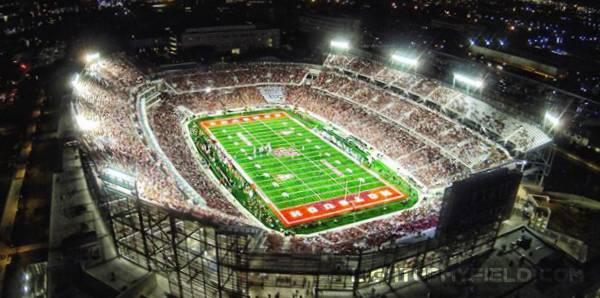 Before you start typing up anything, take a moment to really read the fine print on the grant’s requirements. It sounds obvious, but you’d be surprised how many applications get tossed because they didn’t meet a small technical detail. Look for who can apply—some grants are only for public schools, some for nonprofits, and others might require a partnership with your city or county.
Before you start typing up anything, take a moment to really read the fine print on the grant’s requirements. It sounds obvious, but you’d be surprised how many applications get tossed because they didn’t meet a small technical detail. Look for who can apply—some grants are only for public schools, some for nonprofits, and others might require a partnership with your city or county.
Also check if they have specific tech requirements. In 2025–2026, many programs are pushing LED or solar-powered stadium lighting as a condition. If your plan already uses those, make that fact shine in your application. If you’re still deciding, it might be worth switching to meet that criteria—LED lights can cut energy use by up to 70%, which is exactly the kind of stat funders love to see.
Step 2 – Tell the Story of Why It Matters
Grant reviewers aren’t just looking at numbers—they’re looking for projects that make a real difference. Paint a clear picture of your current situation. Maybe your team has to end games early because it gets dark at 6:30 p.m. in the fall, or maybe the old metal halide lights are dim, patchy, and cost $3,000 a year in electricity.
Then show them the transformation: brighter, safer night games, extended practice hours, more chances to host community events. The more they can see the impact in their minds, the better.
Step 3 – Be Specific About the Plan
Vague proposals are a fast track to the “no” pile. Include concrete stadium lighting design details—brand and model of lights, wattage of lights, number of poles, projected lifespan, and exact energy savings in kilowatt-hours per year. If your project would save 50,000 kWh annually, put that number front and center.
Don’t just guess at costs—get at least two quotes from contractors so your numbers are solid. If your total budget is $200,000, break it down into equipment, labor, and any related costs like trenching or electrical upgrades.
Step 4 – Show the Bigger Impact
Funders love to see ripple effects. In 2025–2026, they’re especially into measurable results—like reducing your carbon footprint by 60% compared to the old system, or being able to host 20 to 30 more night games per year. If your new lighting will let you host regional tournaments that bring in hundreds of visitors, mention the local economic benefit too.
Community access is another big win. If the lights will also let local youth leagues, marching bands, or community groups use the field, make that clear—it shows the project serves more than just the school.
Step 5 – Get Your Timing Right
One of the simplest but most overlooked strategies: apply early. A lot of grants either have rolling deadlines or run out of money before the official closing date. If a program says it’s open until December, but you submit in November, you might find the budget already tapped out.
For example, in 2024, a Midwest school applied for a state sports facility grant on day one of the window and got full consideration—while another school that applied three months later was told funds were gone. In short, be ready with a polished proposal in the first half of the funding cycle.
Step 6 – Back It Up with Support
Letters of support can push your application over the top. A short endorsement from your school district, local government, or a community organization shows that you’ve got local buy-in. If possible, include a commitment for matching funds—many grant programs in 2025–2026 give preference to projects where the community is also investing financially. Even 10–20% matching funds can tip the scales in your favor.
What Types of Projects Can Actually Get Stadium Lighting Grants?
It’s Not Just About Building From Scratch
A lot of people think stadium lighting grants are only for big, flashy new stadiums, but that’s far from true. In 2025–2026, many funders are actually more excited about renovations and upgrades than starting from scratch. Why? Because it usually costs less, uses fewer materials, and delivers faster energy savings.
For example, replacing outdated halogen lights with LEDs can drop energy consumption by 50–70%, which can mean thousands of dollars saved every year. That’s a stat grant reviewers love to see.
Brand-New Lighting Installations
If your school or youth league has been relying solely on daylight, a new lighting system can be a complete game-changer. Suddenly, you can schedule evening games, extend training hours into the cooler parts of the day, and even host weekend tournaments without worrying about sunset.
A standard small-stadium LED lighting system can run between $150,000 and $250,000. Grants often cover a big chunk of this, especially if the field will serve multiple groups—like school teams, youth leagues, and community events. Funders like knowing their money will benefit more than one audience.
Renovations and Energy-Saving Upgrades
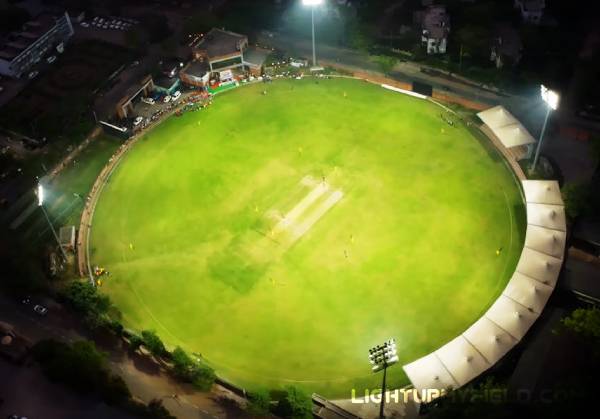 This is probably the most common type of stadium lighting grant project. Swapping out old metal halide lights for LEDs isn’t just about brighter fields—it’s about cutting maintenance costs and slashing power bills. LEDs can last 50,000–100,000 hours, compared to the 5,000–10,000 hours you get from older bulbs. That’s a huge drop in replacement and labor costs over the years.
This is probably the most common type of stadium lighting grant project. Swapping out old metal halide lights for LEDs isn’t just about brighter fields—it’s about cutting maintenance costs and slashing power bills. LEDs can last 50,000–100,000 hours, compared to the 5,000–10,000 hours you get from older bulbs. That’s a huge drop in replacement and labor costs over the years.
Some schools have managed to cut annual lighting costs from $4,000 to under $1,500 just by upgrading. If you can show those numbers in your grant application, you’ll have a stronger case.
Solar-Powered Lighting – The Trend Everyone’s Watching
Solar lighting is seriously heating up in the world of stadium upgrades right now. It makes perfect sense—combining the excitement of night games with the eco-friendly benefits of renewable energy is a win-win. For 2025–2026, lots of state and federal grants are offering extra funding specifically for solar-powered systems, sometimes covering as much as 80% of the total cost.
What’s even cooler is how solar solutions are getting more flexible. Mobile solar light towers are becoming a popular option for schools and youth leagues. These portable towers pack powerful LED lights powered by solar panels and batteries, so you don’t need to worry about expensive electrical hookups or digging trenches for cables. They’re perfect for temporary setups, special events, or places where running power lines just isn’t practical.
If your school or community is in a rural area or somewhere off the grid, highlighting that in your grant application can really give you an edge. Funders love projects that bring lighting to places where it was previously too costly or complicated to install traditional systems.
Hybrid Projects – The Best of Both Worlds
Sometimes, the smartest move is a mix-and-match approach. For example, you might install new LED poles on one side of the field while replacing old fixtures on the other. This kind of hybrid project shows you’re making the most of what you already have, which appeals to grant committees looking for cost-effective and sustainable solutions.
One high school in Colorado combined a partial renovation with new solar-powered lights for its practice field in 2024, reducing overall costs by 35% while still hitting energy-efficiency goals. That kind of creative planning can make your proposal stand out in a competitive funding round.
Why 2025–2026 Could Be the Perfect Window to Apply
More Money in the System Than Usual
Right now, there’s a bit of a sweet spot for anyone looking to fund stadium lighting. Federal and state governments are still riding the wave of post-pandemic infrastructure funding, and a chunk of that money is going toward community and school facility improvements. Some states have specifically earmarked $10–20 million over the next two years for athletic projects that meet sustainability goals—exactly where LED and solar lighting fits in.
Sports Organizations Are Doubling Down on Youth Access
National sports bodies aren’t just talking about youth sports—they’re putting real money behind it. In 2025, the U.S. Soccer Foundation increased its annual budget for Safe Places to Play grants by 15%, and other sports associations are following suit. That means more opportunities for lighting projects that extend play hours, host evening tournaments, and create year-round access to safe, well-lit fields.
Energy Companies Want You to Save Power
Utility providers are under pressure to hit carbon reduction targets, and that works in your favor. In 2025–2026, many energy companies are offering rebates of $200 to $500 per LED sports fixture replaced. Some even offer extra funding if your lighting is paired with solar panels. In certain cases, these rebates can be stacked with grants, which means you might cover 70–90% of your costs before you even start fundraising locally.
Multiple Funding Streams Mean Bigger Possibilities
Here’s the best part: you don’t have to rely on just one grant. Because there are so many active funding sources—government, sports foundations, corporate sponsors, utility rebates—you can piece together full or near-full coverage in a way that just wasn’t realistic a few years ago. In 2024, a school in the Pacific Northwest combined a state green energy grant, a local sports foundation award, and utility rebates to cover 94% of its $280,000 lighting project.
Bringing the Vision to Life
Landing a stadium lighting grant for a school or youth sports field might seem like a long shot, but with the right timing, a strong project plan, and some persistence, it’s absolutely within reach. The 2025–2026 funding cycle is shaping up to be one of the most promising periods in years—especially if your project focuses on energy-efficient LEDs or solar-powered systems.
Whether you’re aiming for a simple renovation or a full-scale new lighting installation, the real key is convincing funders that your project will deliver lasting benefits—not just for today’s players, but for the entire community over the long haul. More games under the lights, more practices after sunset, more tournaments that bring people together… it all adds up to stronger community ties and unforgettable moments.
If you’re feeling unsure about where to start, we can help you navigate the process, from finding the right programs to preparing an application that stands out. Reach out to us, and let’s see how we can get your field shining bright for the seasons ahead.

